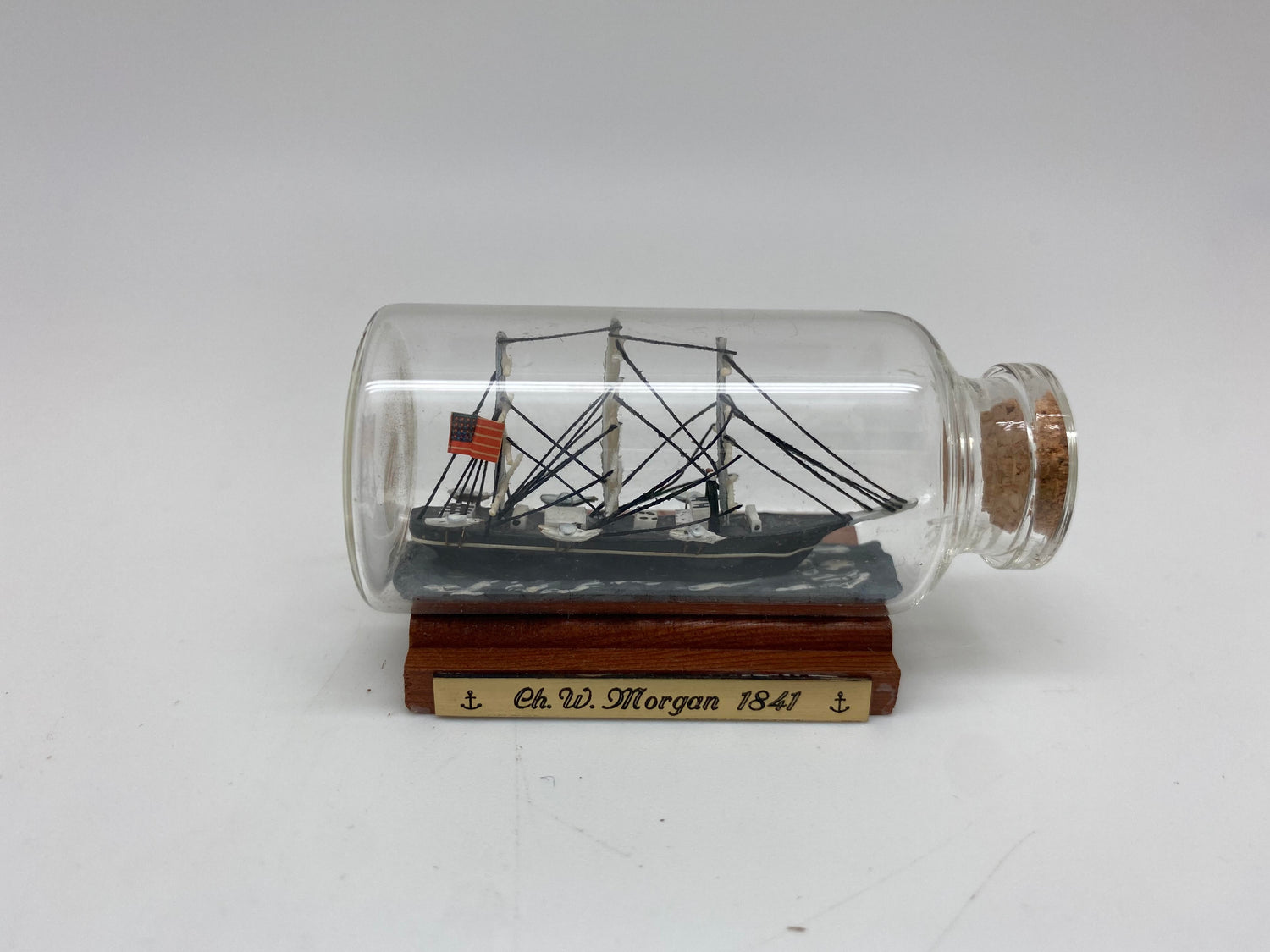sailorscrafts
Charles W. Morgan 1841
- Regular price
- $25.00 USD
- Regular price
-
- Sale price
- $25.00 USD
- Unit price
- per
Couldn't load pickup availability
Dimensions:
2 ⅜” x 1 ¼” x 1 ¼”
All ships are made by hand in Uruguay and enter through the neck of the bottle. If you’re curious about how they get in there, keep on reading!
Traditionally, ships in bottles were made using drawstrings that allowed a ship that was created outside of a bottle and flattened through the use of hinges to be re-erected once inside the bottle by pulling the strings. Our ships are created by hand using a technique that requires even more skill and precision. The model is first built and completely finished outside of the bottle. Then, each mast, including sails and all, is removed again. The hull is then inserted into the bottle, and each mast is individually added and glued into place. This technique makes it possible to reproduce fine details because pressure on the rig is minimal and more delicate materials can be used. It also allows the hull and superstructure to be larger because they are able to take up the entire diameter of the bottle neck (as opposed to the drawstring method where the entire ship has to fit through while folded).
Charles W. Morgan:
The Charles W. Morgan is the last of an American whaling fleet that numbered more than 2,700 vessels. Built and launched in 1841, the Morgan is now America’s oldest commercial ship still afloat – only the USS Constitution is older.
The Morgan was launched on July 21, 1841, in New Bedford, Massachusetts. It typically sailed with a crew of about 35. The whaleship measures 106 feet in length on deck with a beam measuring 27 feet. Its main truck on the mainmast is 110 feet above the deck; fully-rigged the ship carries 7,134 square feet of sail. The huge try-pots used for converting blubber into whale oil are on deck; below are the cramped quarters in which the officers and men lived.
Over an 80-year whaling career, the Morgan embarked on 37 voyages with most lasting three years or more. Built for durability, not speed, it roamed every corner of the globe in pursuit of whales. The Morgan is known as a “lucky ship,” having successfully navigated crushing Arctic ice, hostile natives, countless storms, Cape Horn roundings and, after finishing its whaling career, even the Hurricane of 1938.
The whaleship was designated a National Historic Landmark by order of the Secretary of the Interior in 1966, and is also a recipient of the coveted World Ship Trust Award. Since its arrival at Mystic Seaport Museum, more than 20 million visitors have walked its deck.
The oldest existing ships in bottles were made around 1760. These are intricate professional pieces. Apparently, they were made by commercial workshops specializing in the construction of ship models to serve as gifts for kings, admirals, and other important people.
Dating back to 1850, ships in bottles were constructed by sailors on board the tall ships. At this time beverage bottles were made from clear glass and became available to the public. After a sailor had finished his favorite drink, possibly on a wide, calm sea, the empty bottle in front of him served as inspiration. Since the tools and materials available on board the ship were limited, the first examples of maritime craft are of a rather crude and simple design. These old models, however, exude a special and unique charm in spite, or perhaps because of, their simplicity.
Often the sailors chose to copy their own ship, and if in a harbor, the scene around them may have been placed in the background. In this way, these models became sources of contemporary history. Nowadays, most of the ships in bottles are put together on land. There are clubs and fairs where ideas and new construction techniques are shared.
Share


